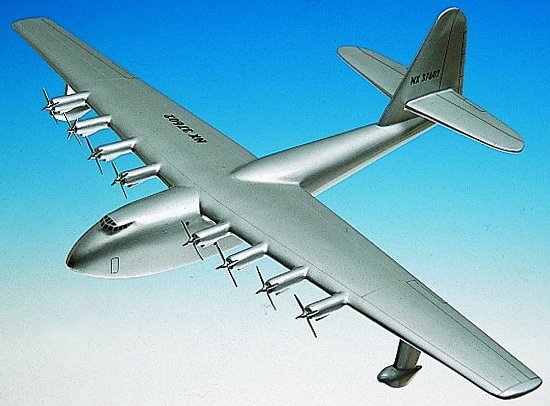|
|
|
Hughes H-4 Hercules
"Spruce Goose"
|
|
The Spruce Goose is the
largest airplane ever built and probably the most prodigious aviation
project of all time. It was conceived early in World War II to
provide the means to transport troops and supplies across the
submarine-infested waters of the Atlantic Ocean.
It was the idea of Henry Kaiser, famous for the production of liberty
ships. It was originally designated the HK-1
(Hughes/Kaiser), but when Henry Kaiser withdrew from the project, it was
redesignated the H-4 Hercules. It was constructed by Howard Hughes
and his staff. It was a massive task, one plagued with engineering
problems.
The Spruce Goose was completed too late to participate in
the war. On November 2, 1947, Howard Hughes and a small
engineering crew fired up the R-4360 engines for taxi tests.
Howard Hughes was at the controls and began a high speed taxi. He
thrilled thousands of on-lookers with an unannounced flight. The Flying
Boat lifted 70 feet off the water, and flew one mile in less than a
minute at a top speed of 80 miles per hour before making a perfect
landing. There was no longer a need for the plane, so Hughes
locked in a hanger for many years.
It was on display at Long Beach,
California as part of the Queen Mary Complex, but recently moved to
Evergreen Aviation Museum at McMinnville, Oregon. |
|
 |
Hughes
Spruce Goose
Standard Series model. 1/200th scale. 19.25" wingspan x 13.25" long.
No. ABX6D-ST Only $159.95 |
|
